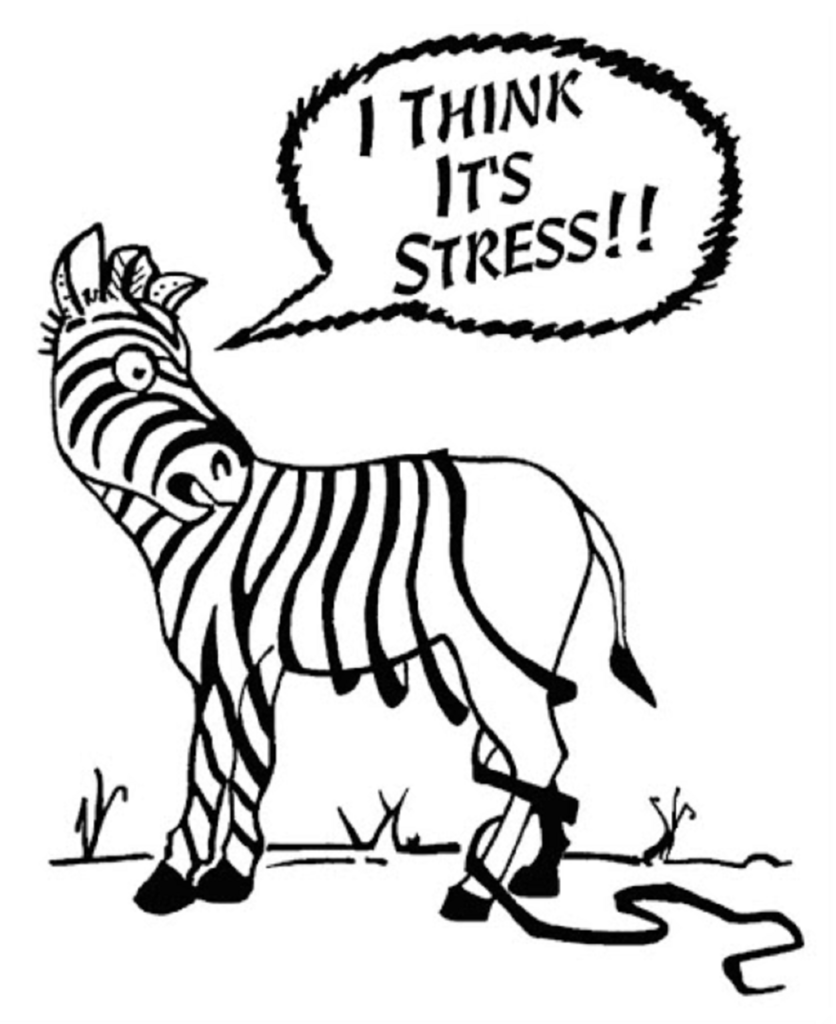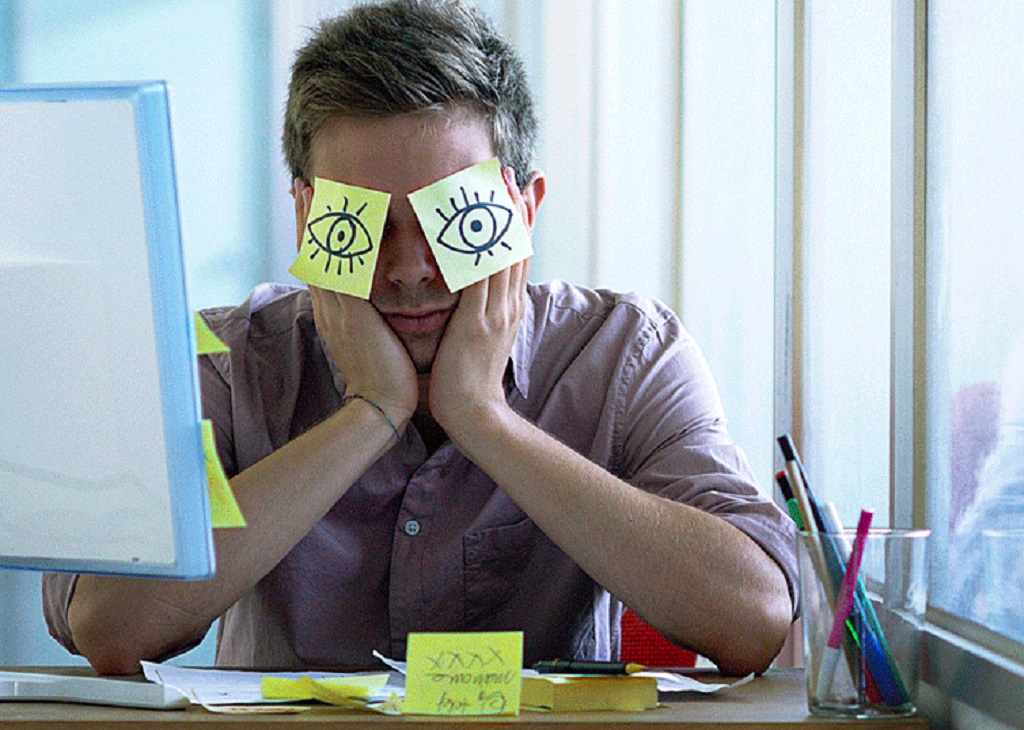Stress leave isn’t quite the same as a vacation because during this leave, the goal is to definitely unwind and actually work towards recovery from the stress you faced. For this, you can prioritize a good sleep routine, prepare nutritious meals, enjoy quality time with loved ones, and exercise. You can also include hobbies that can re-charge you such as socializing with friends, thinking back at why you took the job while going for a meditative walk, making a pros and cons list in your journal about your career, etc.
Stress leave is most beneficial for those who have been experiencing cumulative stress results from the accumulation of several stressors such as a heavy workload, a lack of communication, a feeling of frustration at the inability to meet the needs of beneficiaries, the obligation to face situations in which one finds oneself helpless, the lack of basic comfort or the inability to rest or relax.
Under normal circumstances, good stress management, individually or in groups, can keep it under control, but in some stressful situations, cumulative stress can develop quickly and turn into burnout.
Stress Leave: You Never Knew You Needed One Until You Qualify!
What is Stress?

- Stress is a reaction to a situation; this is not the actual situation. We react to stress when the demands of a situation are greater than the resources available to us to solve it. For example, a person who feels comfortable speaking in public may not be afraid to give a presentation, while another, who is unconfident in their abilities, may experience a lot of stress about the subject of a presentation to make. Common sources of stress can include important life events such as moving house or changing jobs. Long-term worries, such as long-term illness or raising children, can also be stressful. Even everyday worries like dealing with traffic can be stressful” – Canadian Mental Health Association.
- Stress is your mind’s mental reaction to a real or perceived threat. Most problems today cannot be solved with a fight-or-flight response. We must seek to solve our problems and find constructive solutions.
- Stress is linked to the way we react to difficulties that arise. Reactions vary from person to person.
- When a person is under a lot of stress, they may have difficulty concentrating, making decisions, and feeling confident. Many people experience physical sensations such as sweating, increased heart rate, and increased muscle tension.
- Stress can also have a long-term effect on physical health. The most common symptoms of stress are headaches and fatigue, and people are also more likely to get sick or have their health deteriorating.
Here’s why “work stress” is different:
Stress at work can come from many sources or from an isolated event. It can affect both employees and employers. It is considered that a little stress is acceptable (what is sometimes called a “challenge” or “positive stress”), but when the level of stress exceeds what one is able to assume, mental and physical changes can occur.
“Work stress” is a set of harmful emotional and physical reactions that can occur over a period of time.
“Work stress” occurs during subtle or significant conflict between an employee’s work demands and the employee’s degree of control over meeting those demands.
In general, the combination of high demands on the job and poor control over the situation can lead to stress.
It is true that stress can be both good and bad:
Stress is a part of life and can be a positive force. In fact, it’s often what gives us the energy and motivation to tackle everyday challenges, both at home and at work. This type of stress response helps us overcome challenges and achieve goals such as deadlines, sales or production goals, and recruiting new customers. Some don’t see it as stressful, considering the satisfaction and happiness that comes with reaching the goal.
Negative feelings associated with stress usually increase when the person believes the demands are beyond their ability to cope. This is when a stress leave comes in handy.
Stress can prevent one from being productive. In some cases, you might choose to entirely avoid dealing with the problem, which can make the situation worse and put additional stress on your future reality and the people around you.
What causes stress in the workplace?
Stress at work is not the result of just one factor. The professional and personal life of each worker brings different elements that can influence their reactions to working conditions. Here are a few examples:
Categories of work-related stressors
Task design

- workload (overload and insufficient load)
- pace of work, variety of tasks, meaning of work
- time required to complete a task
- autonomy (ability to make own decisions about work or specific tasks)
- shift work, work schedule
- skills or abilities that do not match the requirements of the job
- zero scope for training or preparation (technical and social)
- lack of recognition isolation at work (emotional or solitary work)
Role in the organization

- role conflict (conflicting job demands, too many roles, multiple supervisors and managers)
- unclear professional expectations, ambiguity of roles (lack of clarity regarding responsibilities, expectations, etc.)
- level of responsibility
Professional perfection

- no possibility of promotion or early promotions
- job security or insecurity (fear that one’s position will be considered surplus due to the economic situation or a lack of work)
- less scope for professional development or advancement
- general job satisfaction
Relationships at work (interpersonal)

- supervisors (conflict or lack of support)
- colleagues (conflicts or lack of support)
- threats of violence, harassment, etc. (threats to personal safety)
- lack of confidence
- lack of systems at work to report and manage unacceptable behavior
- prejudice or discrimination
Organizational structure, work climate, management style

- participation (or non-participation) in decision-making
- communication habits (poor communication or transmission of information)
- lack of recognition for a job well done
- lack of systems at work to address concerns
- lack of solicitation of employee participation when undertaking organizational changes
- perceived lack of fairness (who gets what, and when; decision-making process). Feelings of injustice amplify the health effects of perceived stress
- lack of support (such as family-friendly policies and employee assistance programs)
Work-life balance

- conflicting roles and responsibilities
- exposure of the family to occupational risks
Working conditions, workplace concerns

- exposure to unpleasant conditions (promiscuity, odors, etc.)
- exposure to hazards (ergonomics, chemicals, noise, air quality, temperature, etc.)
Emotional and Physical signs that you are under stress:
Yes, stress can affect your overall health. The body is designed, or pre-programmed if you prefer, to have automatic reactions allowing it to cope with stress. The problem is, it reacts the same to all types of stress.
Physical signs:

- headache
- muscle tension or pain
- chest pain
- increased heart rate and blood pressure
- weakened immune system
- fatigue, insomnia
- upset stomach and digestive problems
- hyperglycemia
- increased levels of cholesterol and fatty acids in the blood for energy production systems
- obesity
Emotional signs:

- increased memory loss,
- anxiety,
- restlessness,
- irritability,
- defensiveness,
- mood swings,
- hypersensitivity,
- anger,
- decreased ability to think or concentrate,
- sleeping troubles,
- self-medication or overuse of drugs,
- depression,
- nervousness,
- reckless behavior (often caused by a feeling of unfairness or injustice),
- Feeling apart from others or isolated,
- Make errors in judgment.
How to take stress leave (in the USA):
In the United States, there is a law called the Family and Medical Leave Act (FMLA) that offers you to take unpaid time away from work if you need to take care of a sick family member or if you’re experiencing mental or physical health symptoms that are significant enough to permit you from not working.
This law not only allows several important protections for workers experiencing health concerns, but it helps your job to stay protected.
This law is not all roses and sunshine, as there are some serious things to consider.
- Under FMLA stress leave, you won’t receive pay.
- Under FMLA stress leave, you’ll still receive health insurance benefits.
- Under FMLA stress leave, you need to qualify and should have been employed by your employer for at least 12 months. In the last 365 days or a year, you must punch in at least 1,250 hours, or about 26 hours per week to qualify.
- Under FMLA stress leave, you are allowed 12 weeks of unpaid leave where your job is protected during this time. If your employer can’t offer you the exact same job upon your return, they must give you a similar position with around the same salary.
- Under FMLA stress leave, if your firm consists of less than 50 employees, it may not offer this type of leave.
- Under FMLA stress leave, no matter how many employees they have, public agencies and schools must follow FMLA stress leave.
- FMLA doesn’t require this, but some companies might continue to pay workers on leave.
- Prior to using this law, see if your company can allow you to use sick days or accumulated time off so you get paid for part of your leave.
How to take stress leave (outside the USA):
There are many strategies that can be used to ask for stress leave. One of the best is of course having a good relationship with your employer and requesting unpaid leave while you re-group. You can also show that you have worked the minimum hours needed and put forth a strong case to needing the stress leave.
Strategies to come back in more relaxed after stress leave:

As the causes of stress in the workplace vary widely, so do strategies to reduce or prevent it.
When stress in the workplace is caused, for example, by being too noisy, measures should be taken to limit the noise, if possible.
If you experience pain as a result of repetitive exertion, it is possible to modify workstations to reduce repetitive and tiring movements.
Job design is also an important factor. Good job design takes into account the physical and mental capabilities of the employee. In general, the following job design guidelines will help reduce or deal with workplace stress:
- The job must be reasonably demanding (it must not be based on “pure endurance”) and the employee’s duties must be minimally diverse.
- The employee must be able to learn on the job and have the opportunity to continue to develop as their career progresses.
- The job must give the person the possibility to make decisions in certain areas.
- The employee must receive social support and recognition at work.
- The employee must feel that the job offers him some prospect for the future.
Employers need to assess the workplace to better understand the risks of stress. They should consider the following:
- Take stress seriously and be understanding with employees who are under too much pressure.
- Know the signs and symptoms that indicate a person is having difficulty coping with stress.
- Involve employees in decision-making and encourage them to express themselves directly or through a committee, etc.
- Encourage managers to have an understanding attitude.
- Be proactive in looking for signs of stress among staff.
- Implement workplace health and wellness programs that target the real source of stress. Stress at work can be of various origins: safety, ergonomics, job requirements, etc. Ask employees to help identify the root cause.
- Incorporate stress prevention or the promotion of positive mental health into your policies or organizational mission statement.
- Ensure that employees have received the appropriate training and that they have the skills and resources necessary to be successful in their jobs.
- Design tasks in such a way as to promote a balanced distribution of the workload. Give employees as much control as possible over the tasks they are expected to perform.
- Treat all employees fairly and respectfully.
- Valuing and highlighting results and individual skills.
- Offer support.
- Clearly state what the job expectations are.
- Strive to limit job demands to what is reasonable by ensuring acceptable deadlines and hours of work, as well as varied, interesting and clearly defined tasks.
- Provide professional therapy options.
Important takeaways from having a stress leave:

While you begin your stress leave, you might feel as if the immense weight holding you down has finally lifted because, with the help of stress leave, you can once again remind yourself what good self-care looks like, a good first step might be creating a self-care plan.
These strategies can help:
Prioritize self-care
Form a sleep routine,
Prepare nutritious meals,
Enjoy quality time with loved ones,
Exercise.
Spend time in nature
Meditate
Journaling or art
Other strategies:
Getting professional support to identify triggers early on can have a big impact on future well-being so that you don’t end up in the same place once again. For example, why should we only look at therapy when we can look at working with a sleep specialist to address patterns of disrupted sleep. For cognitive-behavioral techniques, you can also meet a therapist to deal with stress, anxiety, and depression to cope with triggering subjects or circumstances.
Sometimes your key goal might be to make smaller, manageable changes you can maintain over time rather than the need to implement large changes during your time off.
It is equally important to take some time to visualize the potential outcomes of your stress leave. For example, if you see yourself not being able to change and foresee your workplace situation and life circumstances remaining the same, then your primary goal should be protecting your own well-being. It may be time to acknowledge you can’t continue in a highly taxing job.
Final thoughts on stress leave:
There is no shame in visualizing and seeing yourself return to work and your work colleagues.
Your primary goal might center around exploring ways to keep up your stress-reducing habits.
Remember that the characteristics of the workplace can in itself be a source of stress. Stress management courses and counseling services can be of great help to employees, but it is important to find the source of the stress and deal with it as quickly as possible.
There are many ways to be proactive in dealing with stressful situations such as taking a stress leave. Mental health, self-help, healthy habits, and stress management courses, and counseling services can help employees, but it is important to find the root causes of stress and take steps to address it. However, in some cases, the source of stress cannot be changed immediately. That is why it is essential to find ways to maintain good mental health.
